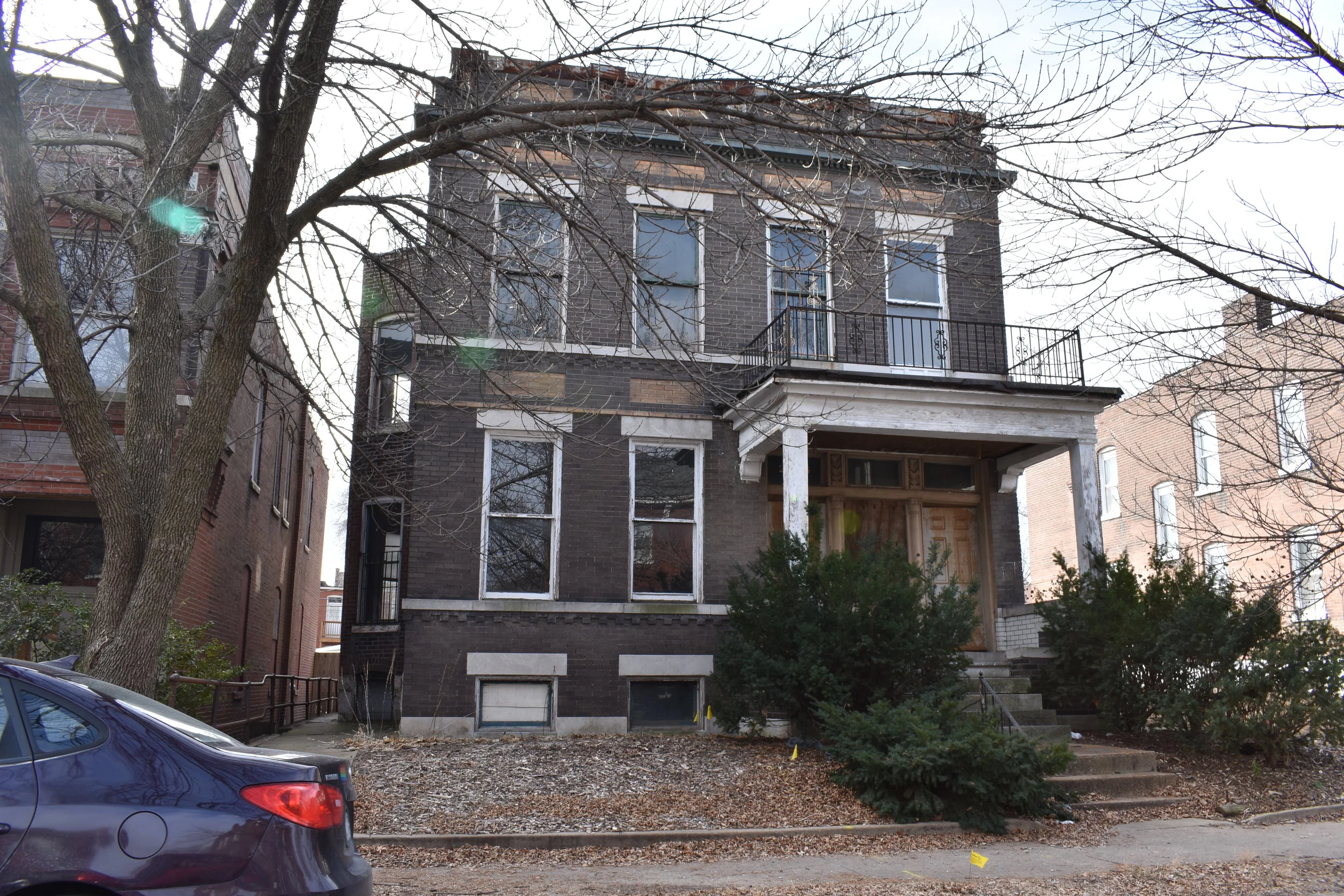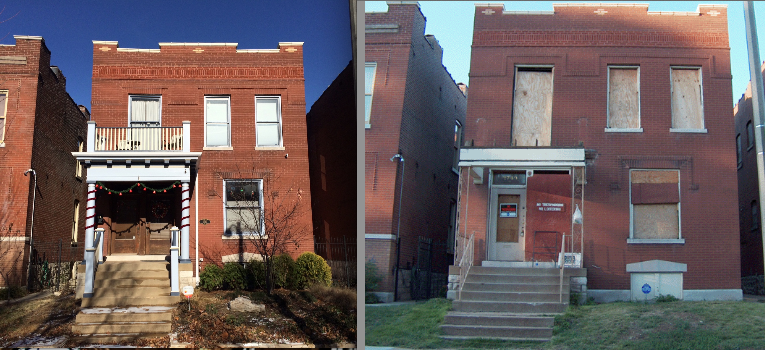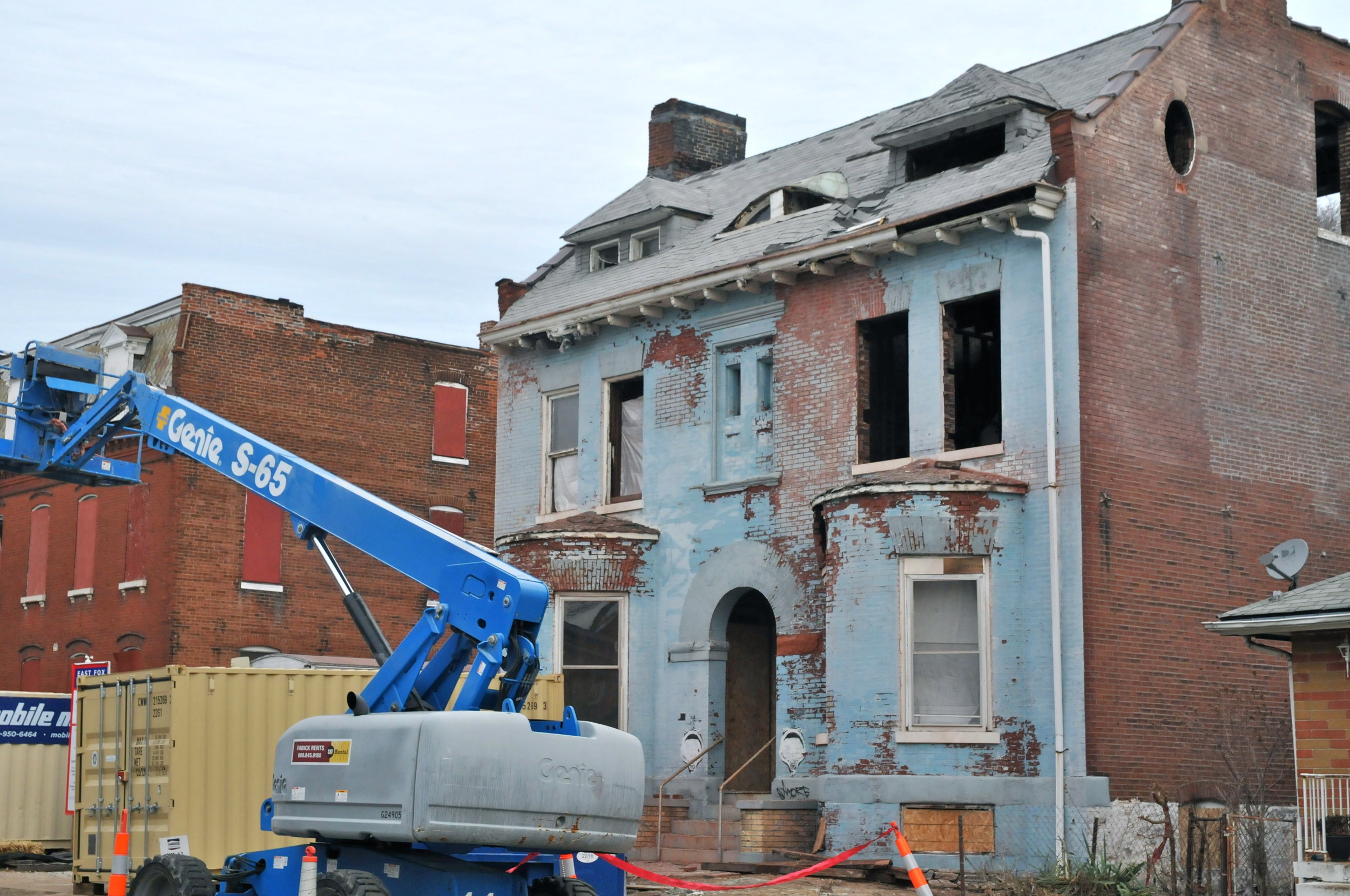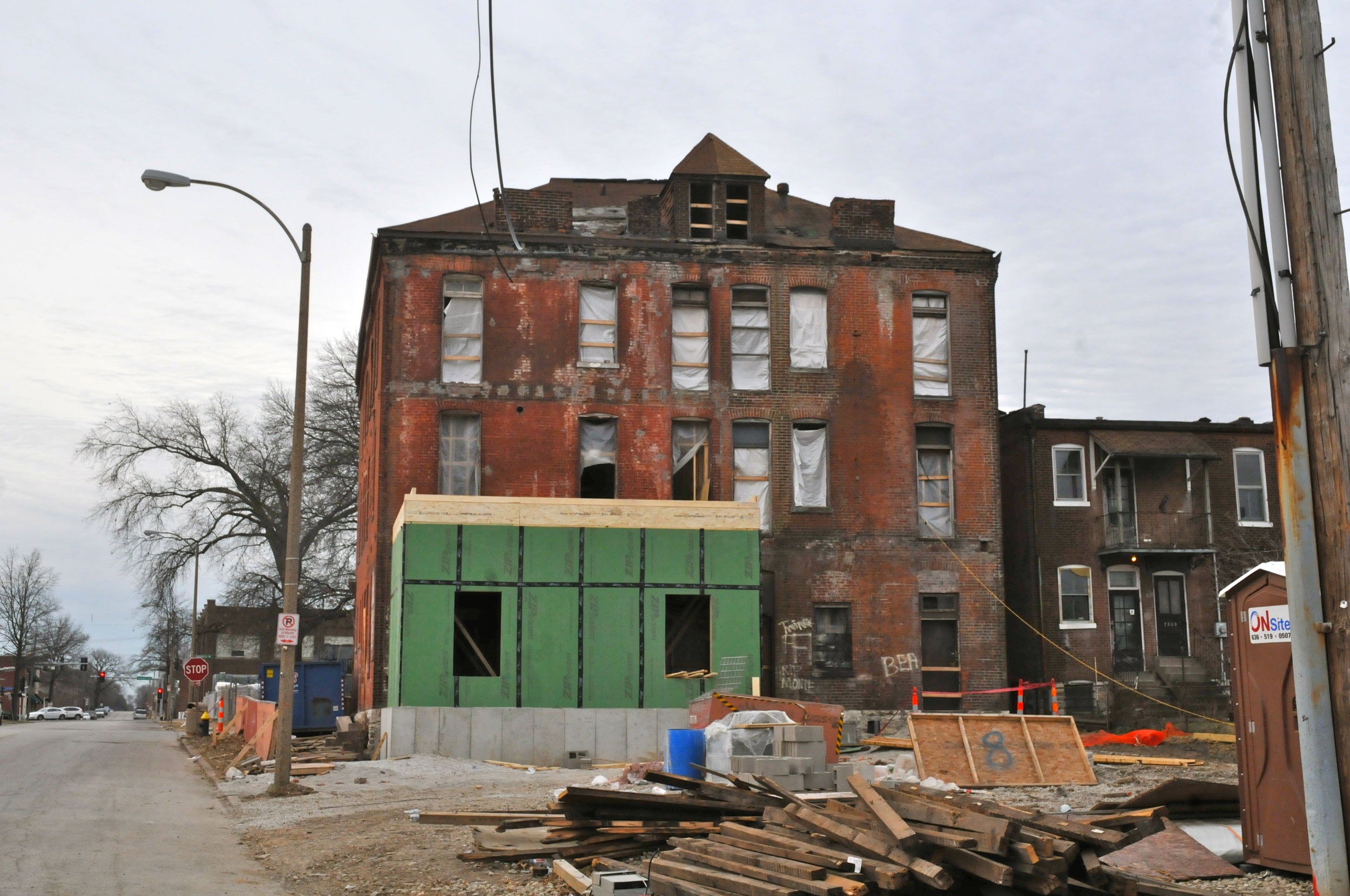Rounding out the list of 2017 favorite development proposals, groundbreakings or progress, is a less splashy and more humble development that in a selfish way will impact me more directly than any of the other projects that made the list.
These year end lists are fun to do. I have time off work around the Holiday's and I use part of that time to share reasons why the haters should think twice when they say St. Louis is dying. Read the comments sections in mainstream media and eavesdrop into the conversations in the County, the thoughts on St. Louis can be straight up hateful, damaging and worse yet, completely misinformed or straight up ignorant.
I try to make these year end blogs short and quick with a little personal perspective from someone who lives here vs. just works here or lives in the region but doesn't have skin in the taxpayer or resident/voter game.
But, I just can't keep it succinct for long, this is a longer post and one that is near and dear to my heart.
Of all the splash and big projects and massive multi-million dollar investments, the thing that our neighborhoods need most is rehabbed of the craftsmanship and beautiful homes and materials that our forefathers used and built to last. Due to the drastic amount of neglect in some parts, we also need new housing on vacant lots. Less demo, more rehab, more new construction that brings a lot back to life.
We need more people more than anything. If this takes tax incentives to compete with the suburbs in this region, we have to consider them in a balanced and strategic way. We have to make sacrifices, but the future should be our main interest...not self preservation in the here and now, nor finger-in-the-dam reactionary activities. Let those that want to leave, leave. Build a city for those who want to stay and/or move here. Build the city we want, smartly and the next generations will follow.
Reading through our list of top twenty projects of 2017, you might get the impression that I like the heavily subsidized massive projects...and I do. You'd have to be a true cynic to think projects like the residential and office component of Ballpark Village Phase II will not make a positive impact on Downtown St. Louis. From nothing but years of surface parking lots and suburban bro/woo-girl bars, this project now has the potential to do something for residents, not just visitors/tourists...bring more people and wallets and eye's on the street to a former dead zone of Downtown flanked by parking lots.
Those big, splashy projects are fun to dream and talk about as well.
You might also get the impression that I'm complicit in promoting or accepting tax abatements and other public incentives intended to boost profits of developers and the law firms that broker the deals. That is not entirely true, and I've given this topic much thought.
I'm generally a fan of Federal and State-level tax breaks, and less interested in local ones. The schools, libraries, community colleges, and city budgets are heavily reliant on property taxes and I have and will continue to use all these services.
But, it feels hypocritical to be pro-taxes and anti-incentives. Sadly, our Metropolitan region is fractured and each city represents itself and it's own interests at the expense of others. How can we compete with Clayton, Chesterfield, Maplewood, Richmond Heights or any other suburban city that will bend over backwards to incentivize a project to their city at the cost of St. Louis, the face of the region (e.g., Centene HQ)?
Also hypocritical is that my home was rehabbed by the previous owner using tax credits and property tax abatements that I've benefitted from. When they expire, it's going to suck for our monthly mortgage payment. Tax breaks are great. From a board up-abandoned property to a lovely home:
Further, I've yet to meet a single soul who will be refusing the income tax breaks that will be coming from the GOP. American's hate paying taxes, we're founded on that. And, I'm convinced that what the city schools need more than any increase in dollars is better hiring, administrative services, information transparency and 500 or so more families that care enough to demand quality education and root down in the system. Maybe some raises for our good teachers too so we can compete with the suburbs a bit more.
But, back to the purpose of this post, my final 2017 favorite is a much more humble one, but one I hope to see more and more of in 2018.
The Fox Park and Tower Grove East neighborhoods recently benefitted from a project called East Fox Homes. This project brought the most amazing transformations of twelve beautiful, fully neglected buildings and made fantastic living and work spaces for low-income residents. This was done with tax credits. It's okay. We win from these situations.
Read all about that project HERE. And here are a couple before & after photos of the finished products:
I thought for sure this building at California and Magnolia would be lost to a windstorm or the many squatters in the area that trespass and light fires in these buildings to keep warm.
But what Fox Park needs next is private investment. It just hasn't taken off at the rate I expected when we moved here seven years ago. The largest property owners are non-profit entities that will keep the rental/owner ratio nicely balanced. Nobody's getting priced out of here any time soon, this neighborhood isn't built that way, it's too diverse in its housing stock to demand high prices on every street.
So considering all these fancy projects that are fun to dream about and speculate on what St. Louis will look like in ten years, the real thing that will impact the future of St. Louis is investment in our neighborhoods and investments in homes and quality residences by people who are willing to root down in the neighborhoods.
I did a quick Twitter poll (which I'm fully aware has no scientific merit) asking followers of this website if they'd prefer a fully rehabbed Chemical Building (a 2016 favorite), a fully rehabbed Railway Exchange Building (a 2017 favorite) or 200 homes rehabbed across the city. Of 60 respondents, over half voted for the neighborhood homes. Less splash, more distribution.
In 2018 would you rather see:
— St. Louis City Talk (@STLCityTalk) December 20, 2017
Back to Fox Park. I read of two projects, and maybe there are more that I simply missed, that are putting private money into vacant lots and rehabbing our brick beauties.
First one I learned about was from a Tweet from @PresbyterianStl, frequent contributor to NextSTL and a great follow on Twitter, is a $300K building permit to rehab a long-vacant and neglected beauty sandwiched between a building used as a police sub-station and a vacant lot. This is rare, but welcomed news.
This will do more to bring positivity to my life than any of the high rises in the Central West End or Downtown. It will impact lives and hopefully future investment in a great neighborhood that needs more of this rehab activity.
Second proposal is for two, two-unit townhomes to be constructed on Geyer Avenue, which abuts the I-44 easement, actually the property is officially listed as 1827 California Avenue. I first read of this on NextSTL back in June, 2017; here's an excerpt from the Cultural Resources Office report within the story:
“THE PROJECT: The developer proposes to construct two 2-family townhouse buildings with attached rear garages on a currently vacant site at the northwest corner of Geyer and California Avenues. The property is directly adjacent to Interstate 44 at the north boundary of the Fox Park Local Historic District.
PRELIMINARY FINDINGS AND CONCLUSION:
The Cultural Resources Office’s consideration of the criteria for new fences and retaining walls in the Fox Park Historic District Standards led to these preliminary findings:
1827 California Avenue is located in the Fox Park Neighborhood Local Historic District.
While the applicant has not provided a specific Model Example for the proposed new construction, the design of the proposed buildings follows historic precedent.
The project generally complies with the Fox Park District Standards for New Construction.
The unusual characteristics of the site, with no rear alley, require that access be provided from California and Geyer.”
I am thrilled. These lots have been vacant for years. In fact, Geo St. Louis lists them as owned by the Land Reutilization Authority and they have not had a building inspection since the mid-1990's, so this has been a lot for over twenty years.
Google Street View Image
We need more Fox Park residents, we need less vacant lots, we need more homes that respect the density and feel of the rest of the neighborhood. Let me tell you, having a garage improves quality of life more than I ever thought. These will have garages with entry off of California Avenue and a new curb cut off of Geyer to enter the western property. I'm 100% okay with that. This is a low-traveled part of the neighborhood and it dead-ends before it reaches Nebraska Avenue, so nobody will be impacted by the curb cut. This is a huge win for a difficult property.
There are plenty more opportunities for infill on vacant lots and rehabs of aging/neglected properties that are either LRA or slumlord/speculator owned. I will provide examples of these board-ups in my next story...stay tuned.
More than any of these high-falootin' projects I've had a blast thinking about and sharing at year's end, it is the smaller projects that will impact the people who are rooted down in the neighborhoods more than anything.
What we've learned from living here is that places that people describe as "rough around the edges" can be a perfectly great place to live and raise a family. But, we need investment to change minds and improve curb appeal. This part of the city is set up for diversity and rental/ownership balance for the foreseeable future. We need more people to root down here to build on this momentum. We need less board ups and vacant properties that attract trespassers, squatters and firebugs. We need less suburban and out of town "investors" sitting on properties.
Here's to each of our 79 neighborhoods seeing similar rehab and infill as mentioned above, no matter what scale and level. This is what we really need to make the city whole.










